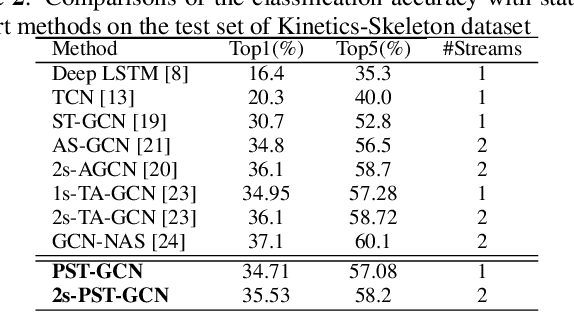Progressive Spatio-Temporal Graph Convolutional Network for Skeleton-Based Human Action Recognition
Paper and Code
Nov 11, 2020



Graph convolutional networks (GCNs) have been very successful in skeleton-based human action recognition where the sequence of skeletons is modeled as a graph. However, most of the GCN-based methods in this area train a deep feed-forward network with a fixed topology that leads to high computational complexity and restricts their application in low computation scenarios. In this paper, we propose a method to automatically find a compact and problem-specific topology for spatio-temporal graph convolutional networks in a progressive manner. Experimental results on two widely used datasets for skeleton-based human action recognition indicate that the proposed method has competitive or even better classification performance compared to the state-of-the-art methods with much lower computational complexity.
 Add to Chrome
Add to Chrome Add to Firefox
Add to Firefox Add to Edge
Add to Edge